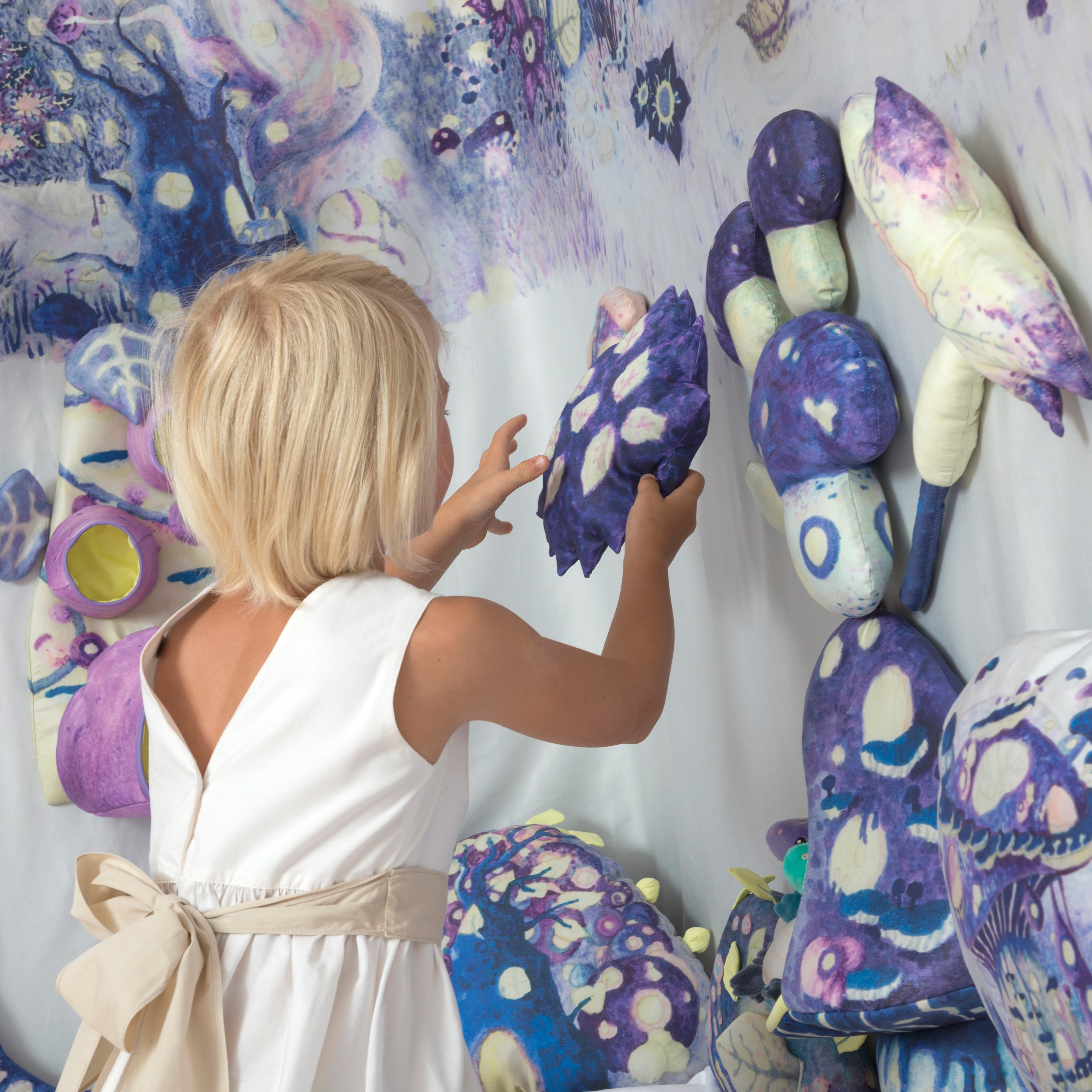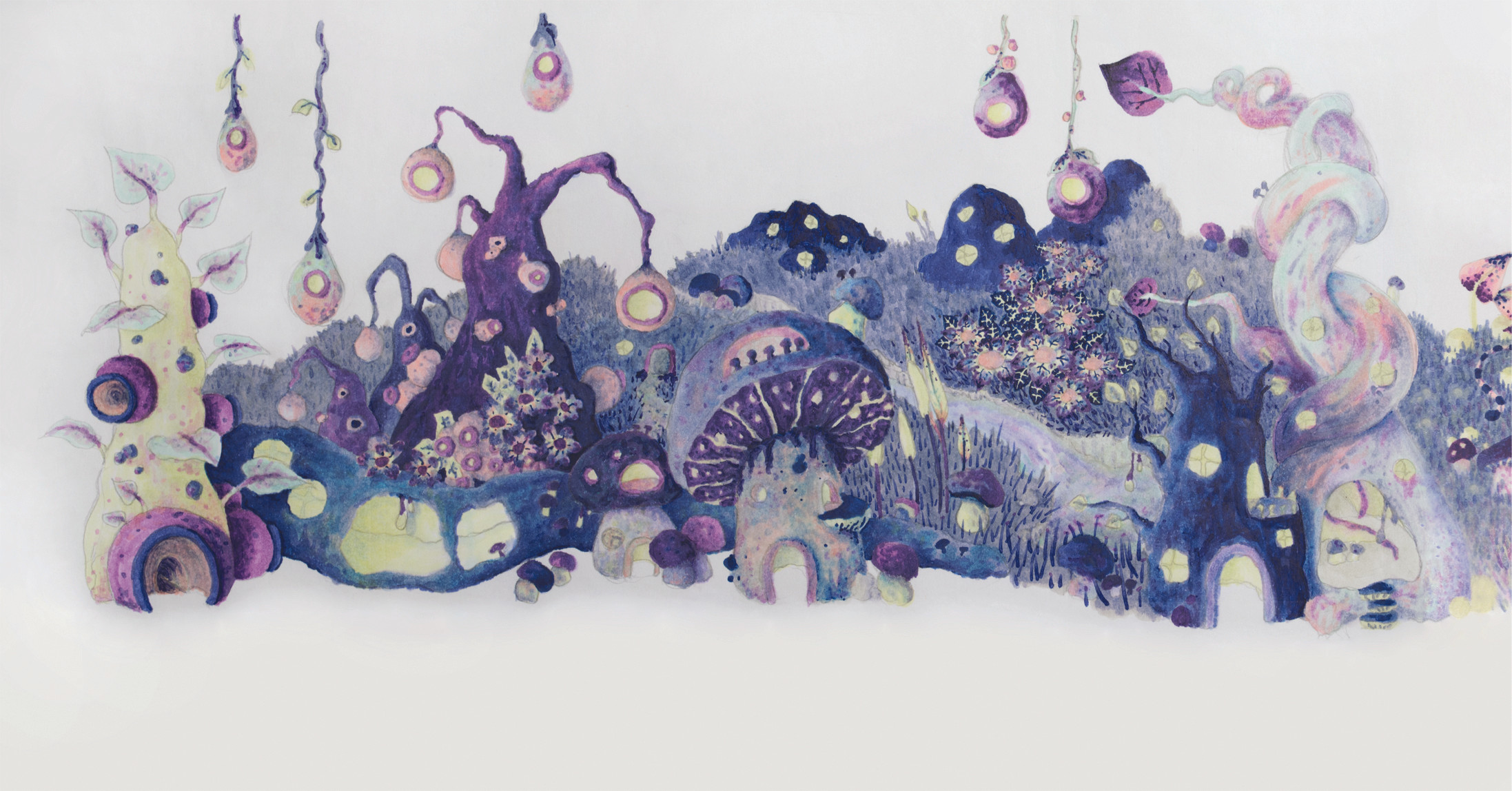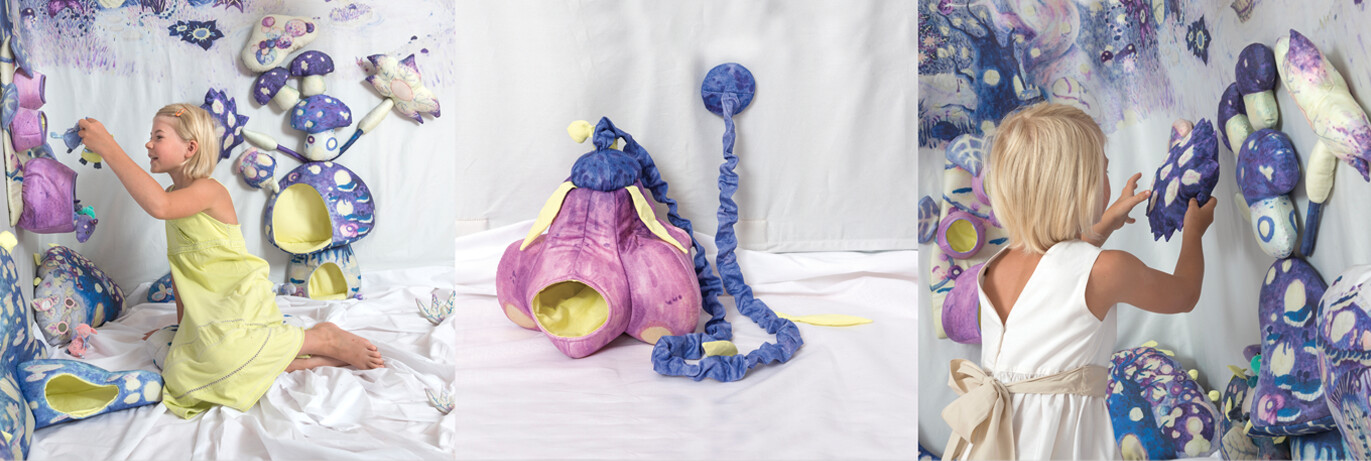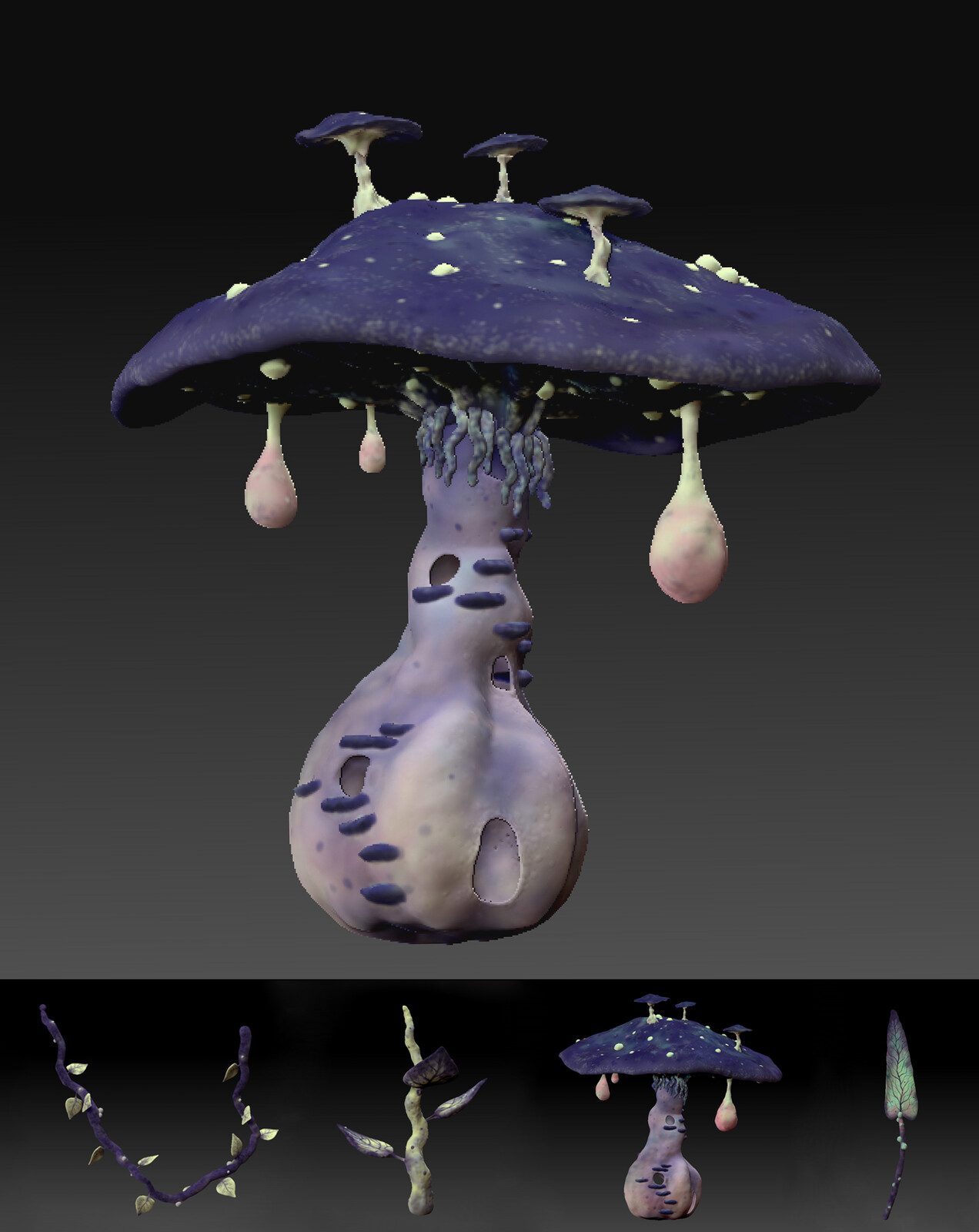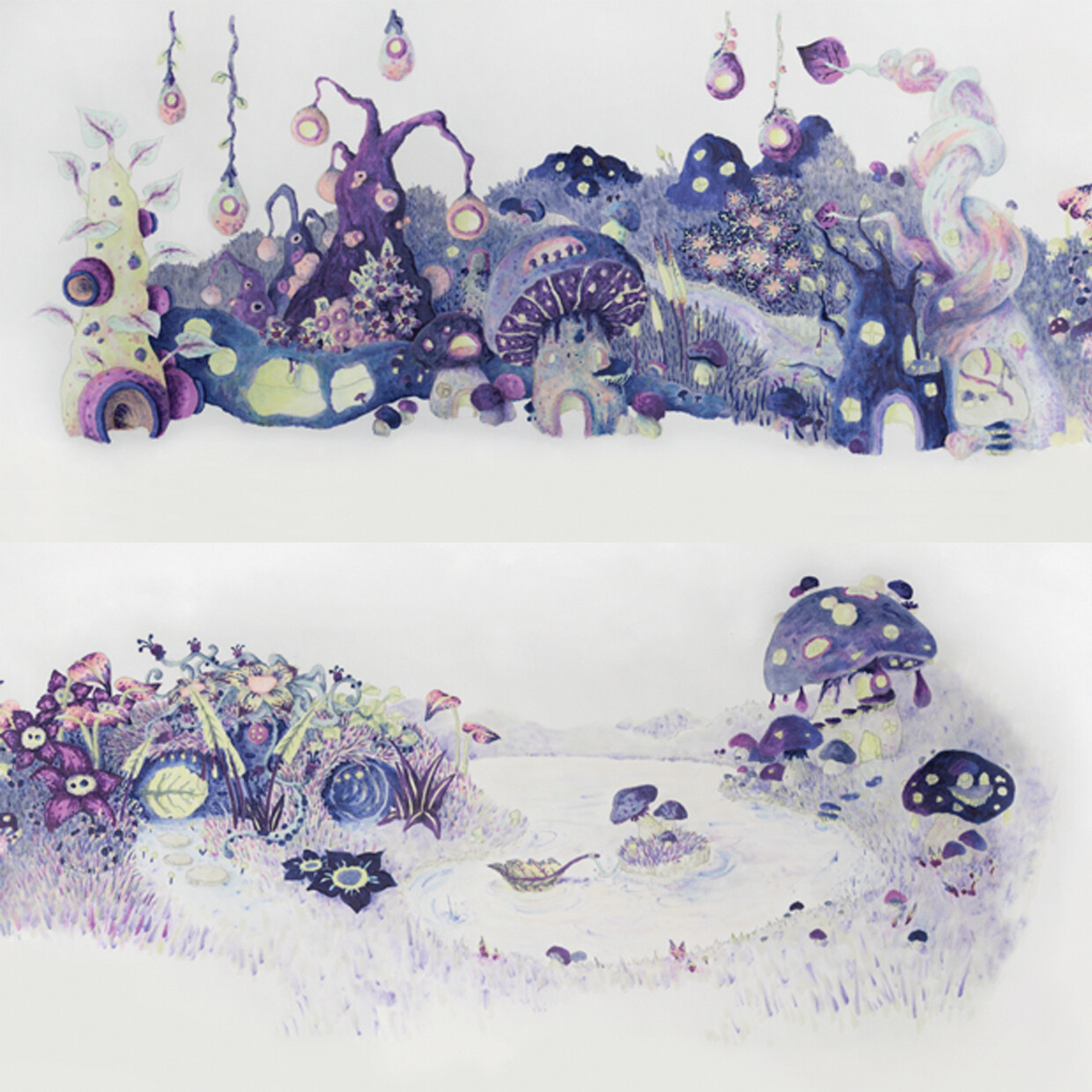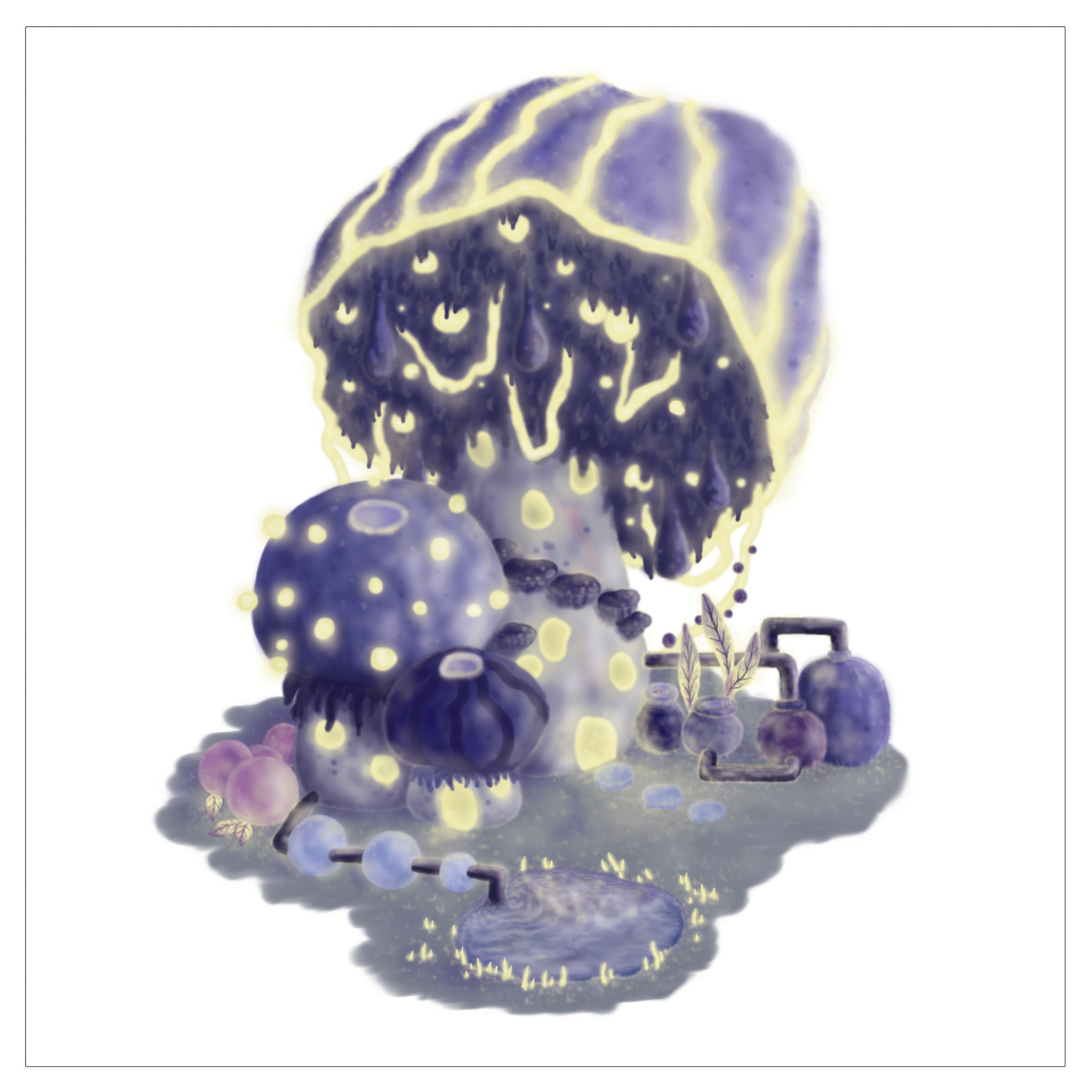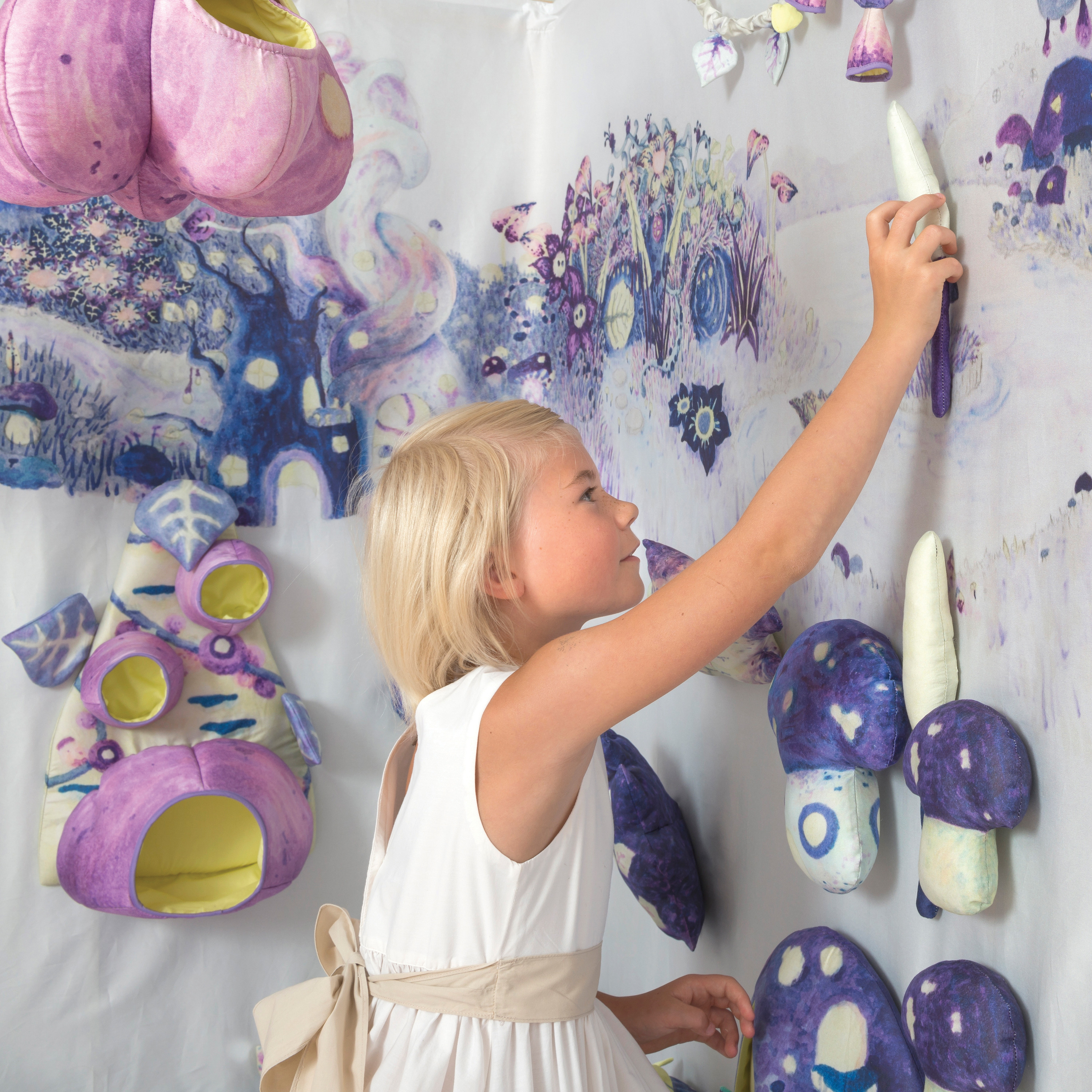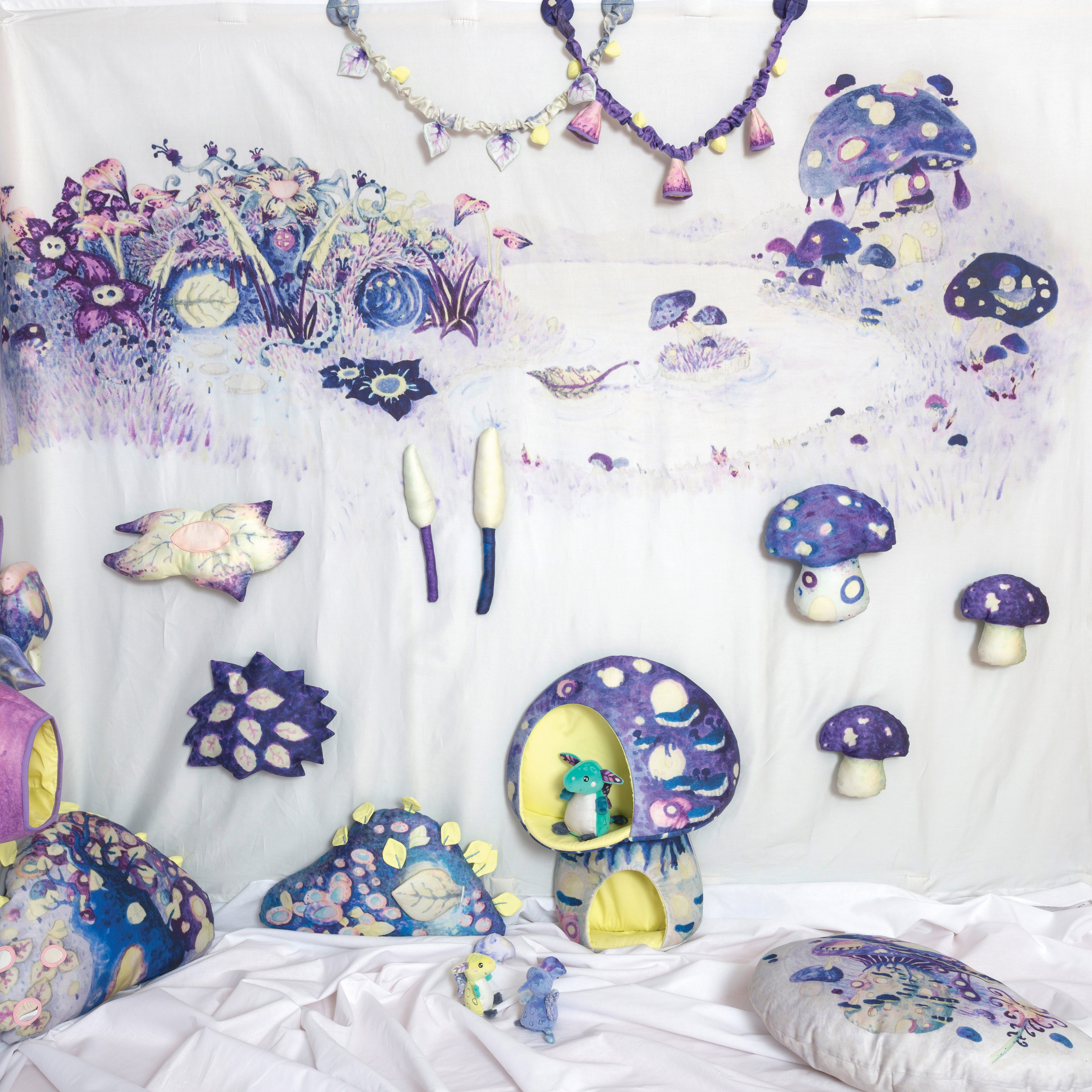Mangalia - Magnetic Textile Playwall
Mangalia - Magnetic Textile Playwall
Mangalia is a multifunctional, magnetic textile-playwall for kids, matching the fantasy theme.
CONTEXT: The floor of a kid's room is usually messy and filled with toys while the wall in general isn't really used for any interaction except hanging up some boards. Therefore the concept of this project is a fantasy themed interior design for kids, in which the wall is actually used as a playground. The intention behind this project is that it is individually arrangable as well as removable (washable) at the same time. The concept works with magnets and magnetic paint. This paint needs to be applied on favored wall parts while the special magnets are stitched into the removable textile-toy elements. Thanks to iron particles in the paint, these plush-elements including the attached magnet, can be fixed at the wall. The grey magnetic paint can be hidden by overcoating it with with a layer of ordinary wall paint. This textile-playwall gains its special charme thanks to its hand drawn designs, which got printed on fabric via digital printing and allow a lot of passion for details. With this concept, a child's room can be transformed into an enchanting fantasy play world which keeps the floor tidy while having an extraordinary interior design at the same time. Mangalia is the final project of my textile design bachelor studies at University of applied sciences Hof.
REALISATION: Sketching the concept. Creating concept art for the world of Mangalia including all plants and characters. Developing the patterns and creating embroidery designs for first samples. Producing first prototype with test-fabric. Controlling the pattern fit and form of the plush elements. Minimizing the pattern. Printing the smaller patterns on paper for alcohol markers. Colorizing those printed patterns with Copic markers. Photographing the colorized patterns and maximizing them so they fit the original pattern size. Editing the pictures in Photoshop. Preparing the patterns for digital textile print in Adobe Illustrator. Testing several fabrics for digital print. Transferring the data for digital print on cotton fabric (satin weave). Cutting, embroidering and sewing. During the sewing process, the magnet gets attached to the textile elements. Some elements are now filled with stuffing others got stabilized by foam cello before stitching. While sewing some special features like mirror-foils or crinkle paper were attached to several plush toys as well.
TECHNOLOGY: Digital Printing, Adobe Illustrator, Adobe Photoshop, Bernina Embroidery Software 6
MATERIAL: Copic Marker, paper for alcohol markers, digital print on Satin Fein 120g/qm 100% Cotton fabric, yellow-green 100% cotton fabric, bias tape 100% cotton, mirror foil, crinkle paper, stuffing, foam cello, Neodym magnets, MagPaint (magnetic paint)
PROJECT MEMBERS: Marie Petters

